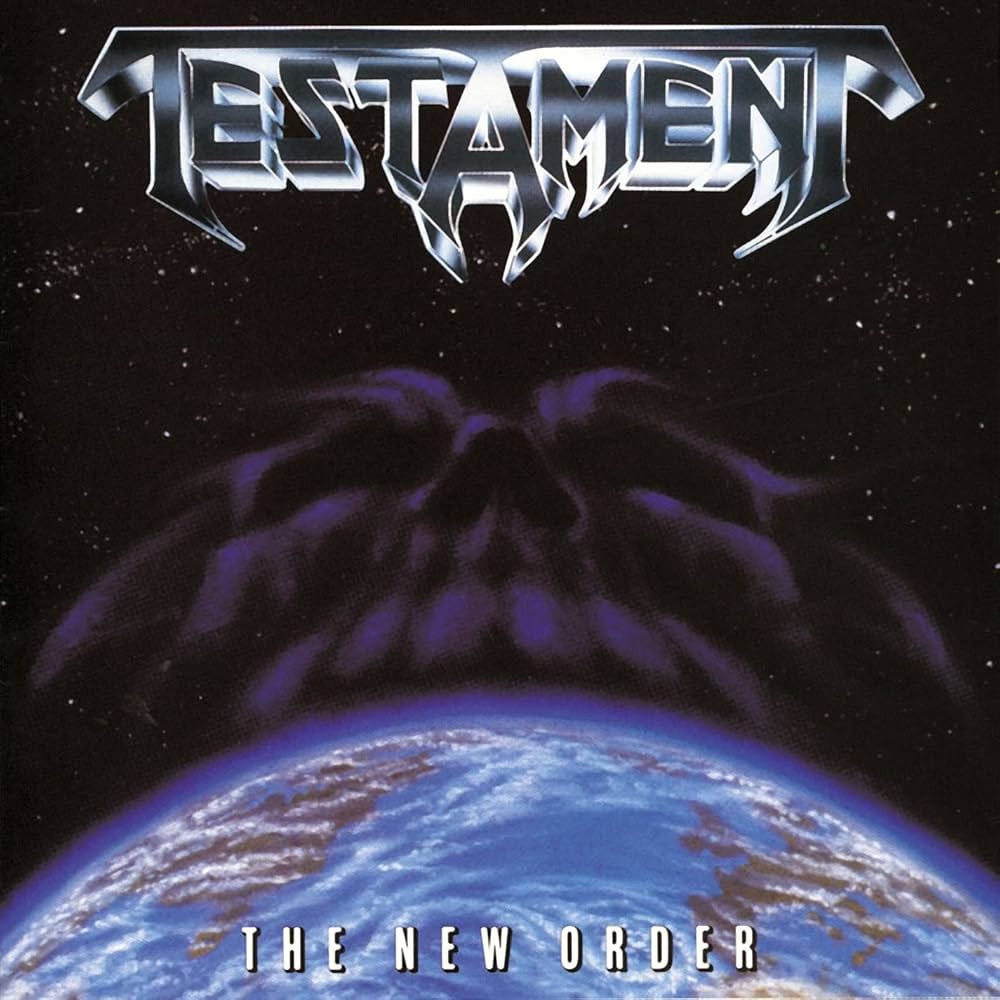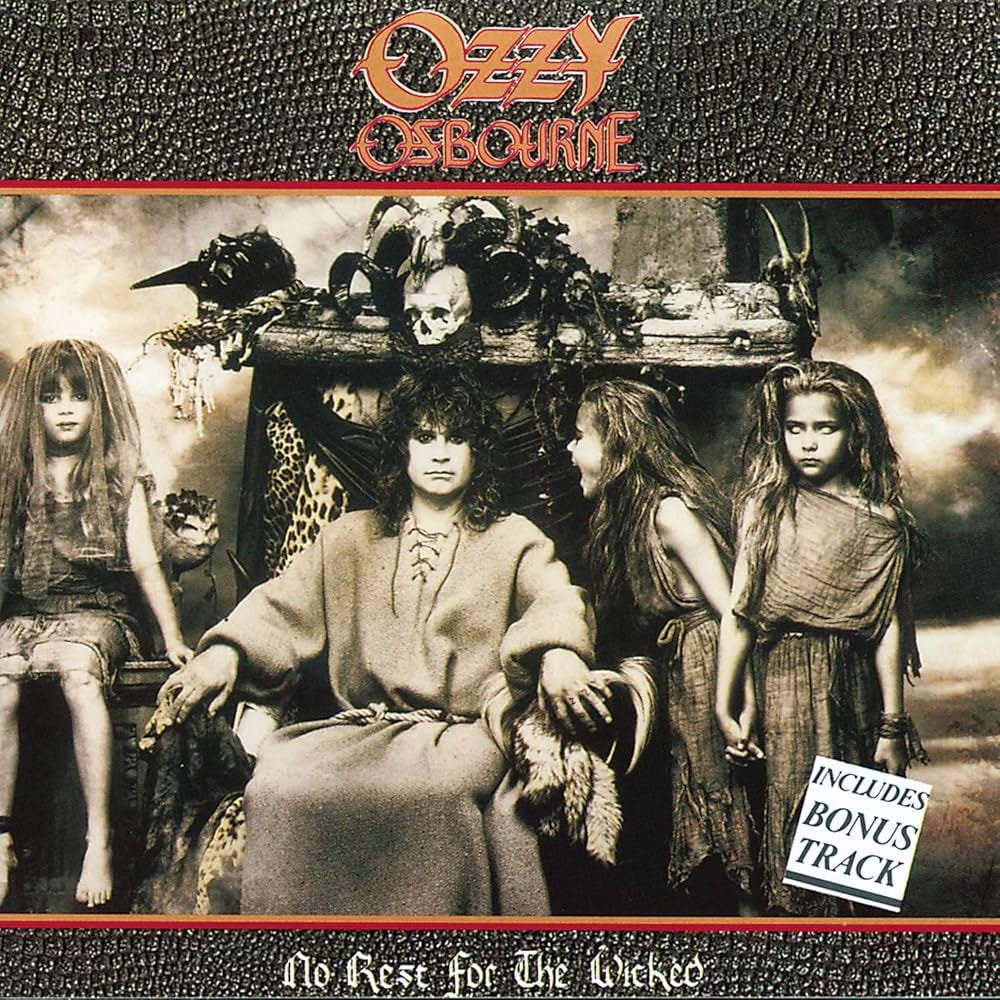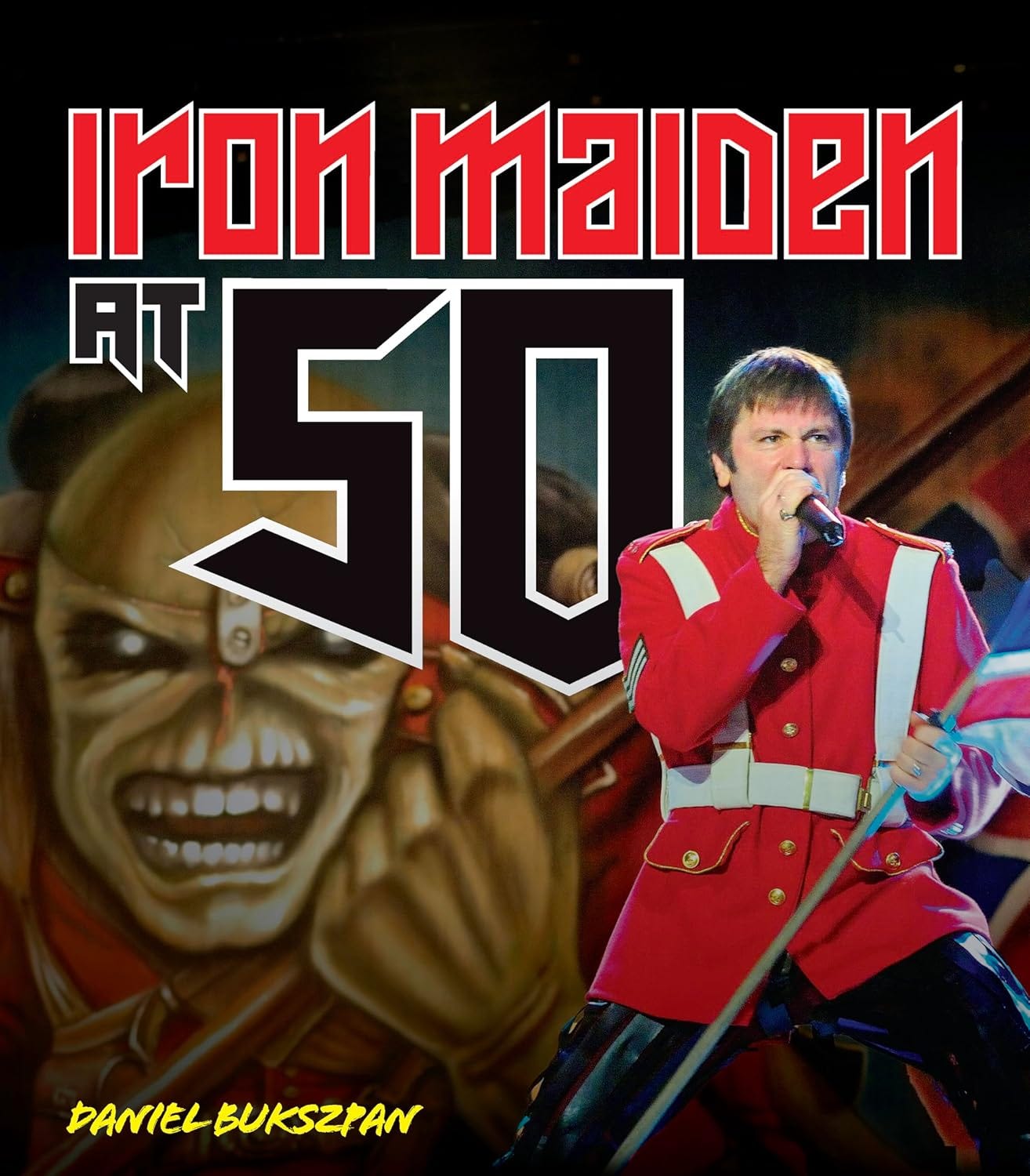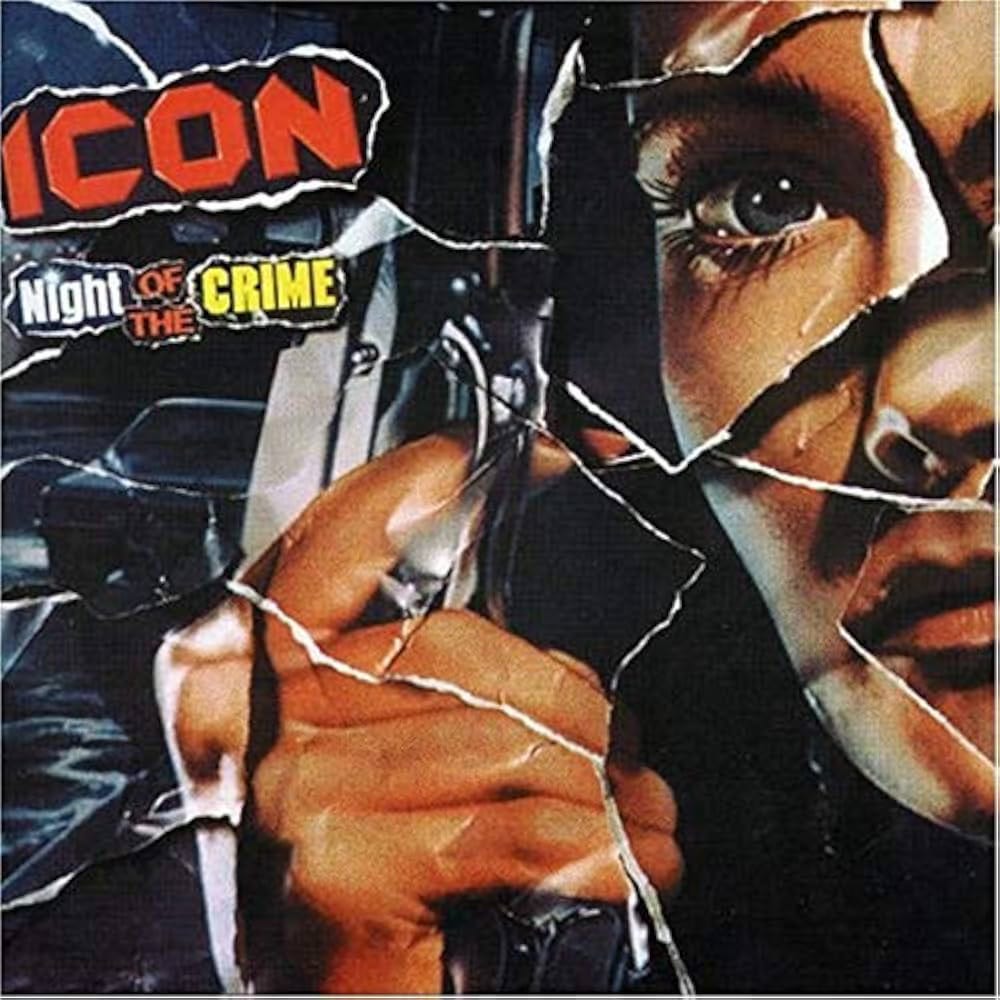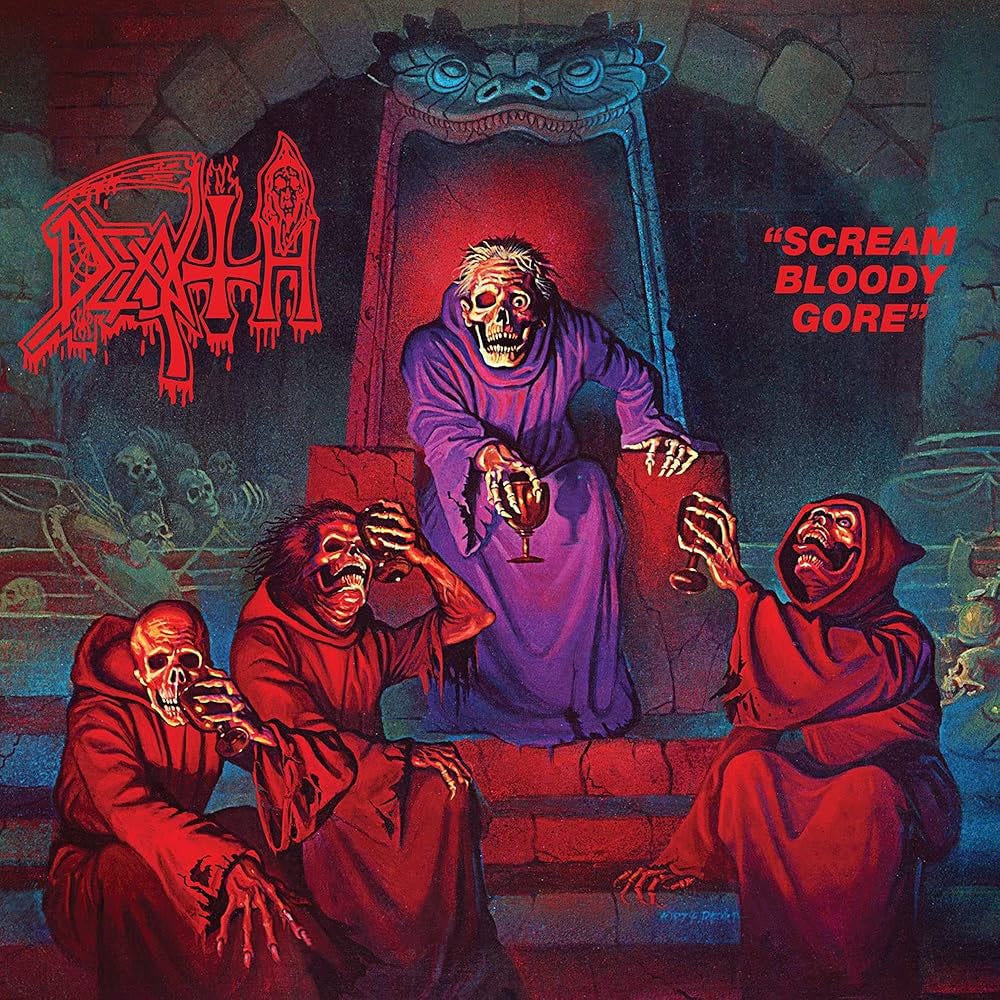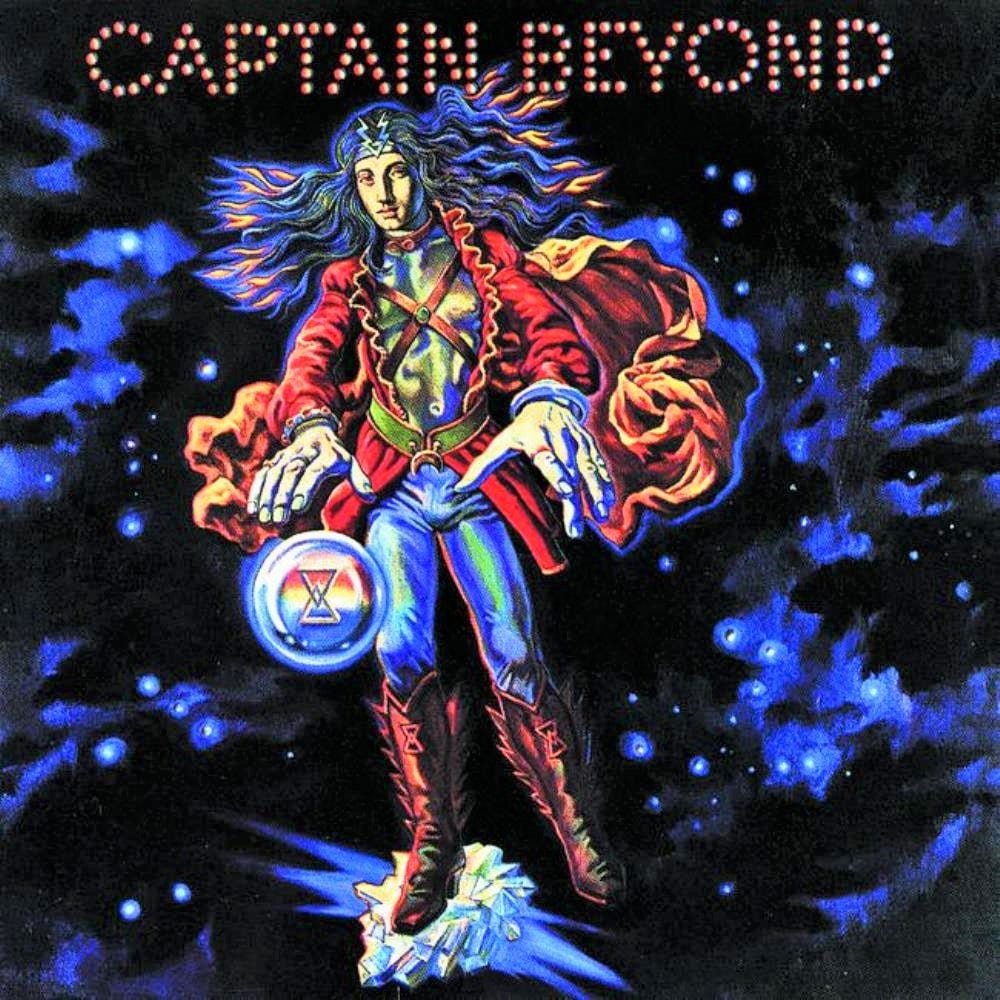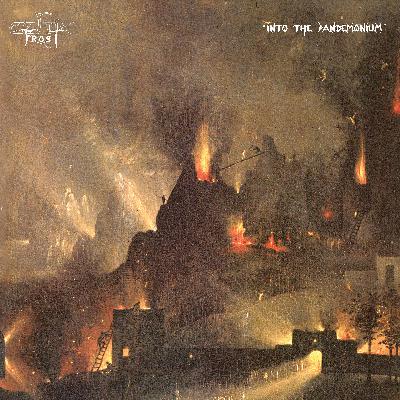Discover Dig Me Out: 80s Metal
Dig Me Out: 80s Metal

Dig Me Out: 80s Metal
Author: Beyond the hits—exploring the albums, bands, and moments that shaped 80s metal
Subscribed: 8Played: 57Subscribe
Share
© J Dziak
Description
J, Chip, and Tim relive the 1980s sonic excess and untamed spirit. Whether you lived for Mötley Crüe’s decadence, cranked Guns N’ Roses’ street swagger, flipped endlessly through Metal Edge, or are just discovering the scene, this is your all-access pass to an electrifying time in music history.
Each episode dives deep into legendary albums, unsung heroes, and behind-the-scenes stories that shaped 80s metal. Let’s relive the magic, one album at a time.
www.digmeoutpodcast.com
Each episode dives deep into legendary albums, unsung heroes, and behind-the-scenes stories that shaped 80s metal. Let’s relive the magic, one album at a time.
www.digmeoutpodcast.com
45 Episodes
Reverse
When Testament finished touring behind their debut album The Legacy, they had zero songs written for a follow-up. The label didn’t care—they demanded another record immediately. Scrambling to fulfill their contract’s 40-minute minimum, the Bay Area thrash band wrote The New Order in the studio, added an Aerosmith cover, tossed in some classical-influenced instrumentals, and somehow delivered one of 1988’s most essential thrash metal albums.In this episode of Dig Me Out 80s Metal, hosts Jason Ziak, Tim Minneci, and Chip Midnight explore how Testament turned deadline panic into precision thrash. They break down Alex Skolnick’s astonishing guitar work (recorded when he was just 19 years old), Chuck Billy’s evolving vocal style, the power grooves that made Testament stand apart from their thrash peers, and why this album should’ve earned them a spot in the “Big Five” of thrash metal alongside Metallica, Slayer, Megadeth, and Anthrax.If you love Metallica, Anthrax, Overkill, or Bay Area thrash metal, this episode unpacks why The New Order remains a thrash clinic 37 years later.Episode Highlights:0:00 – Introduction to 80s Metal poll results and Testament’s victory over Motörhead, Anthrax, and Blackfoot1:03 – Band history: Testament’s origins as Legacy, their Bay Area roots, and the contract crisis that shaped The New Order3:47 – What works: Alex Skolnick’s classical-influenced precision playing at age 19, the power grooves, and the locked-in rhythm section8:12 – “Into the Pit” – Why Testament’s most-played live song became a thrash anthem (even though it’s not about moshing)12:20 – “Disciples of the Watch” – Breaking down one of the album’s heaviest tracks and Skolnick’s sweeping guitar mastery15:04 – The Aerosmith cover: How “Nobody’s Fault” became an unexpected highlight and showcased Testament’s versatility18:29 – The instrumentals: “Hypnosis” and “The Dirge” as atmospheric breathers that elevate the album’s pacing21:44 – “Trial by Fire” – The single that featured on MTV’s Headbangers Ball and showcased Testament’s unique arrangements24:03 – What doesn’t work: Chuck Billy’s Metallica-influenced vocals and missed melodic opportunities29:59 – Original vs. remastered versions: Why the remaster brings the bass and drums forward for a fuller sound34:47 – Worthy Album ratings across the board and why this is Testament’s quintessential record40:05 – Testament’s evolution from The New Order to their heavier modern sound on 2025’s ParabellumSubscribe to Dig Me Out for weekly deep dives into 70s rock, 80s metal, 90s alternative, and 2000s rock. Join the Metal Union at digmeoutpodcast.com to vote on future albums, access bonus episodes, and connect with fellow rock fans in our private Discord community. Keep the podcast ad-free and support the next episode at dmounion.com. This is a public episode. If you'd like to discuss this with other subscribers or get access to bonus episodes, visit www.digmeoutpodcast.com/subscribe
What happens when a 40-year-old metal legend discovers he’s still got more fire in his belly than anyone expected? Welcome to the untold story of Ozzy Osbourne’s “No Rest for the Wicked” — the 1988 double-platinum beast that time somehow forgot, despite launching one of metal’s most influential guitar partnerships and serving up the perfect middle finger to moral crusaders everywhere.This episode digs deep into the album that saw Ozzy team up with unknown 19-year-old guitarist Zakk Wylde, whose pinch harmonics and dive bombs would reshape the sound of metal for decades to come. From the Jimmy Swaggart revenge anthem “Miracle Man” to the progressive showcase “Fire in the Sky,” hosts Jason Ziad, Tim Minnichi, and Chip Midnight explore why this record deserves a place in the conversation alongside Ozzy’s acknowledged classics.The conversation reveals fascinating details about Wylde’s discovery story — from a warped New Jersey bar band cassette to becoming metal royalty through photographer Mark Weiss — and examines how this album bridged the gap between Ozzy’s glam-metal phase and his 1990s progressive direction. You’ll also hear about the controversial “Miracle Man” music video featuring 60 pigs who simultaneously defecated when the music started, creating perhaps the most literal metaphor in metal history.If you love Black Sabbath, Judas Priest, or any band that understands the power of crushing riffs paired with theatrical mayhem, this episode unpacks a criminally underrated chapter in metal history.Episode Highlights:0:00 – Opening & Context – Why “No Rest for the Wicked” was overshadowed despite massive commercial success5:12 – The Zakk Wylde Discovery Story – How a $3 cassette tape and Mark Weiss photography changed metal forever15:30 – Jimmy Swaggart Revenge Plot – Breaking down the “Miracle Man” controversy and Ozzy’s perfect timing25:45 – “Miracle Man” – The vocoder effect that terrified metal purists and the pig-filled music video32:18 – Guitar Evolution – How Wylde’s style bridged Randy Rhoads’ legacy with 90s metal’s future41:22 – “Fire in the Sky” – The album’s most progressive moment and strongest vocal performance48:30 – “Crazy Babies” – Examining the album’s MTV breakthrough single55:17 – “Breaking All the Rules” – Why this track sounds like Ratt but hits harder62:45 – The Lost Songs – Deep cuts like “Demon Alcohol” and “Bloodbath in Paradise”71:33 – Commercial Success vs. Legacy – Why a #13 album vanished from setlists78:20 – Meeting Ozzy Stories – Personal encounters with the Prince of Darkness himselfReady to rediscover metal history? Subscribe to Dig Me Out and join the Metal Union at digmeoutpodcast.com for bonus episodes, exclusive content, and access to our private Discord community where the conversation never stops. Vote on future albums, suggest deep cuts, and connect with fellow metalheads who understand that sometimes the best treasures are the ones that time tried to bury.Visit dmounion.com to become a member and help keep the metal ad-free while supporting the next episode. Because every forgotten masterpiece deserves its day in the spotlight. This is a public episode. If you'd like to discuss this with other subscribers or get access to bonus episodes, visit www.digmeoutpodcast.com/subscribe
Unearthing Europe’s Metal Roots: Wings of Tomorrow RevisitedHave you ever wondered what Europe sounded like before “The Final Countdown” catapulted them to global fame? This week on Dig Me Out, we dive deep into Wings of Tomorrow, the underrated second album that proves Europe cut their teeth in raw ’80s metal—long before synths and stadium choruses took over.In this episode, your hosts Jason Ziap, Tim Minnichi, and Chip Midnight peel back the layers of Wings of Tomorrow to reveal a band straddling the New Wave of British Heavy Metal and European hard rock scenes. We trace John Norum’s guitar wizardry, Joey Tempest’s emerging vocal prowess, and the curious production choices—drum machines, mid-process lineup changes, and a scrappy DIY ethos. Along the way, we debate which riffs stand the test of time and why this cult classic deserves a spot in every metalhead’s collection.If you’re into Iron Maiden’s gallops, early Scorpions firepower, or Rainbow’s dark, riff-heavy mystique, this episode will light up your nostalgia wires.Why You’ll Love This- Discover how Wings of Tomorrow bridges the gap between underground metal and arena rock.- Learn the backstory of a Swedish quartet transforming from Force to Europe.- Debate the album’s standout tracks—from the thunderous “Stormwind” to the bluesy tension of “Scream of Anger.”- Unpack the quirks: drum machine swaps, last-minute lineup changes, and a raw production style that screams authenticity.Episode Highlights0:00 – Intro riff – Framing Wings of Tomorrow as the hidden metal masterpiece2:45 – Album Origins – How Europe evolved from garage-band roots to studio contenders7:30 – Stormwind Breakdown – Scorpions meets Sabbath in a Swedish metal anthem12:15 – Guitar Clinic – John Norum’s wah-pedal wizardry and inverted power-chord magic17:50 – Production Deep Dive – Drum machines, lineup shake-ups, and DIY grit22:10 – Dreamer & the Ballad Seed – Early hints of Europe’s power-ballad future26:35 – Final Verdict – Does it hold up against Iron Maiden, Judas Priest, and Rainbow standards?Tune In & Join the Metal UnionReady to rediscover Europe’s rawest riffs and hidden metal credentials? Subscribe now on your favorite podcast app, join the Metal Union at dmounion.com to vote on our next episode’s album, and head to digmeoutpodcast.com for ad-free listening, bonus episodes, and our private Discord community. Strap in—this is 80s metal history served straight from the underground. This is a public episode. If you'd like to discuss this with other subscribers or get access to bonus episodes, visit www.digmeoutpodcast.com/subscribe
Iron Maiden fans, get ready for a deep dive into five decades of heavy metal legend. This week, Dig Me Out welcomes celebrated author Daniel Bukszpan—the mind behind Iron Maiden at 50—a passionate and visually stunning tribute chronicling the band's journey from East London pubs to global stadiums. Bukszpan’s new book, released September 16th, pays homage to Maiden’s 50th anniversary by exploring fifty pivotal moments: classic albums, lineup shakeups, infamous tours, and milestone performances. Packed with revealing anecdotes, candid photography, and rare memorabilia, Iron Maiden at 50 isn’t just a celebration—it’s an essential resource for anyone who wants to understand how Steve Harris, Bruce Dickinson, and their bandmates earned their place as one of the most influential forces in rock. Whether you’re a seasoned fan or a Maiden newbie, Daniel’s insightful storytelling sparks appreciation for the band’s legacy.Prepare to rediscover Iron Maiden’s explosive 80s legacy in this detailed episode of Dig Me Out 80s Metal. We open the vault with Daniel Bukszpan, author of Iron Maiden at 50—a stunning new book that captures five decades of metal mastery with rich visuals, rare memorabilia, and stories that connect generations. This episode dives deep into Maiden’s cult classic albums, seismic lineup shifts, and the global phenomenon that Eddie and company became, blending behind-the-scenes stories with fan perspectives. Explore what made albums like Number of the Beast, Powerslave, and Live After Death more than just records—they’re milestones that shaped metal’s history.Discover how Maiden’s sound, attitude, and iconic artwork set the blueprint for the genre, why fans remain fiercely loyal, and how these records still anchor new listeners today. If you love the trailblazing spirit of bands like Judas Priest, Metallica, or Rainbow—this episode is your gateway to Maiden’s world. Daniel illuminates the true heart of the band as chronicled in Iron Maiden at 50, offering insights rarely found in liner notes.Episode Highlights:- 0:00 – [Intro riff] – Iron Maiden at 50: Celebrating legends, myth and metal- 3:14 – [Band Origins] – The birth and rise of Maiden’s 80s sound- 17:23 – [Lineup Changes] – How Bruce Dickinson transformed Maiden’s ambition- 31:09 – [Number of the Beast] – The album that made Maiden a household name- 49:42 – [Powerslave & Stage Spectacle] – Maiden’s golden run and live mastery- 75:20 – [Legacy, Influence, and Design] – Eddie, artwork, and impact on metal culture- 92:15 – [Fan Stories] – Maiden’s enduring ability to inspire across generationsAmp up your playlist and join the conversation—subscribe, leave a review, and explore our episode archive at digmeoutpodcast.com and connect with fellow fans at dmounion.com. Don’t miss this essential episode for fans of classic metal, 80s rock, and the living legacy of Iron Maiden. This is a public episode. If you'd like to discuss this with other subscribers or get access to bonus episodes, visit www.digmeoutpodcast.com/subscribe
When Capitol Records’ Next Quiet Riot Vanished Into Thin AirEver wonder what happens when a dream team of rock royalty assembles to create the perfect 80s metal album—only to watch it disappear during the mastering process? Icon’s Night of the Crime is the Phoenix-born tragedy that sits at the very top of the “could have, should have been huge” list, featuring Eddie Kramer behind the boards, Ron Nevison on the mix, and Bob Halligan Jr. crafting radio-ready hooks that Kerrang! Magazine would later rank as the third greatest AOR album of all time.In this deep dive, the Dig Me Out crew unpacks one of metal’s most fascinating “what if” stories—a Capitol Records release that had everything: sophisticated songwriting with clever half-time dynamics, dual guitar harmonies that rivaled the best AOR bands, and a powerhouse vocalist in Stephen Clifford who could hit impossible octaves while maintaining that essential metal grit. But just as the album was ready for its 1985 MTV conquest, Clifford walked away during mastering, taking Icon’s shot at stardom with him and leaving behind a perfectly crafted 40-minute mystery.If you’re fascinated by the intersection of professional songcraft and metal authenticity—think Def Leppard’s Pyromania meets Journey’s sophistication with the edge of early Quiet Riot—this episode reveals why geography, timing, and band chemistry matter as much as talent in the unforgiving world of 80s rock radio.Episode Highlights:0:00 – Tournament Results – How Icon beat Ozzy in a listener poll tie-breaker9:53 – The Eddie Kramer Factor – Why Jimi Hendrix’s producer took on a Phoenix metal band12:17 – The Vanishing Singer – Stephen Clifford’s mysterious exit during mastering18:05 – Sophisticated Metal Dynamics – Breaking down Icon’s clever use of half-time and strategic pauses25:33 – AOR Meets Metal – How Icon straddled the line between commercial appeal and hard rock edge29:10 – Bob Halligan Jr.‘s Hooks – The song doctor’s six co-writes that should have been hits38:00 – Perfect Timing Gone Wrong – Why 1985 was Icon’s window between Pyromania and Hysteria52:00 – Phoenix Geography Problem – How being 400 miles from the Sunset Strip hurt Icon’s chances1:00:34 – Final Ratings – Two “Worthy Albums” and one “Better EP” verdict on this lost classicReady to discover your next obsession in overlooked 80s metal perfection? Subscribe to Dig Me Out for more deep dives into the albums that deserved better, and join the Metal Union at digmeoutpodcast.com to vote on future episodes. Want bonus content and access to our Discord community? Check out dmounion.com for exclusive 70s, 80s, and 2000s rock episodes that keep the discovery going strong. This is a public episode. If you'd like to discuss this with other subscribers or get access to bonus episodes, visit www.digmeoutpodcast.com/subscribe
Death’s Scream Bloody Gore: The Album That Birthed Death MetalWhat happens when a 19-year-old horror movie fanatic from Florida decides to create the heaviest music imaginable? You get Scream Bloody Gore, the 1987 debut that didn’t just launch Death’s career—it created an entire genre. This is the album that made death metal official, complete with the perfect band name to match.In this episode, hosts Jay, Tim, and Chip dive deep into Chuck Schuldiner’s groundbreaking vision that transformed from rejected Florida demos to a Billboard-charting phenomenon. They explore how Combat Records took a massive gamble on this unknown teenager, the recording disasters that led to the album being tracked twice, and why Florida became the unlikely epicenter of extreme metal. The discussion reveals surprising musicality beneath the brutality, from melodic guitar solos to dynamic drumming that defies the “wall of noise” stereotype.The hosts candidly share their first impressions as death metal newcomers, debating everything from Chuck’s surprisingly varied vocal approach to the album’s timeless production quality. They unpack the horror movie-inspired lyrics, the influence of Black Sabbath and Kiss, and how this 37-minute assault influenced countless bands while spawning an entire ecosystem of subgenres.If you’re fascinated by metal history, the origins of extreme music, or how teenage vision can reshape entire genres, this deep dive into death metal’s ground zero is essential listening. Fans of early Metallica, Slayer, Possessed, and the broader Combat Records roster will find plenty to sink their teeth into.Episode Highlights:0:00 – Introduction – Poll results and first impressions of death metal’s founding album5:18 – Album Background – Chuck Schuldiner’s journey from demos to Combat Records deal6:32 – Recording Chaos – The Florida studio disaster and California re-recording10:39 – Listener Comments – Community insights on death metal’s Florida origins14:45 – Death Metal Subgenres – From brutal death to porno grind (seriously)17:21 – What Works – Surprising musicality, guitar solos, and vocal range25:04 – Timeless Influence – How the album sounds as relevant today as in 198735:24 – What Doesn’t Work – Double-time limitations and production challenges41:53 – Lyrical Analysis – Horror movie themes and teenage songwriting50:16 – Chart Success – How death metal hit Billboard #174 without radio play54:38 – Final Verdicts – Worthy album or essential EP?Ready to explore the brutal brilliance that started it all? Subscribe to Dig Me Out for more deep dives into the albums that changed music history. Join the Metal Union at digmeoutpodcast.com for bonus episodes, exclusive content, and access to our private Discord community. Visit dmounion.com to vote on future episodes and suggest your favorite underground classics. This is a public episode. If you'd like to discuss this with other subscribers or get access to bonus episodes, visit www.digmeoutpodcast.com/subscribe
Ready for a cosmic discovery? Imagine if members of Deep Purple, Iron Butterfly, and Johnny Winter’s bands joined forces for one brief, blazing psychedelic trip—left behind in the dusty bins of 1970s rock. That’s Captain Beyond: a cult supergroup whose self-titled debut LP isn’t just underrated, but a secret handshake among true riff obsessives, stoner rock aficionados, and prog heads alike.In this episode, the Dig Me Out crew dives deep into Captain Beyond’s 1972 debut, unpacking how a band with pedigree and ambition—yet dogged by legal drama and label confusion—could create an album both seamless and strange, with songs flowing together in widescreen, time-shifting suites. Hear wild stories about Rod Evans’ post-Purple exile, the musical chemistry born in a Sunset Boulevard rehearsal room, and the band’s mind-melting blend of proto-metal, jazz fusion, and space rock.The talk turns to why Captain Beyond has influenced bands from Kyuss to Monster Magnet without ever grabbing mainstream fame. The panel debates whether the record’s genre-melting ambition is a blessing or a hidden barrier, calls out riffs and grooves that predate entire subgenres, and explores which tracks land hardest five decades later. If you love the restless invention of early Yes, the cosmic attack of Monster Magnet, or the boundary-pushing jams of Sabbath and Santana, don’t skip this one.Episode Highlights0:00 – “Dancing Madly Backwards (On a Sea of Air)” intro – Meet the unsung supergroup and hear how their debut warped the hard rock rulebook.6:38 – Backstory & Band Drama – Lost contracts, missing songwriting credits, and the 48-hour recording sprint that captured lightning.15:24 – Genre-Bending Sound – Jazz, prog, heavy grooves, and psychedelia swirl in tracks like “Mesmerization Eclipse” and “Raging River of Fear.”30:05 – Rod Evans: Rock’s Mystery Man – How the Deep Purple frontman vanished from music after giving this band their haunting voice.39:52 – Suite-Like Structure – Why this album flows more like a trip than a collection of songs.47:20 – Legacy & Influence – From stoner rock to modern prog, Captain Beyond’s fingerprints are everywhere—if you know where to listen.55:13 – “I Can’t Feel Nothin’” – The finale of the album: relentless, relentless, relentless.Ready to blast off? Hit play, subscribe, and join our community for passionate discussion and wild album picks at digmeoutpodcast.com and dmounion.com. Rediscover lost classics, debate the classics, and help shape the next rock deep dive. Don’t let this cult gem slip beyond—your ears deserve the trip This is a public episode. If you'd like to discuss this with other subscribers or get access to bonus episodes, visit www.digmeoutpodcast.com/subscribe
What happens when Poison’s fire-brand drummer trades stadium pyrotechnics for scrappy club gigs, hand-picks BulletBoys shredder Mick Sweda, and dares to mash up Duran Duran with T. Rex? Meet Rikki Rockett’s Rocket Mafia—the “anti-cover-band” cover band that’s rewriting the rules of ’80s metal nostalgia while plotting its own originals.Rikki Rockett—fresh off the Stadium Tour and revved up by motorcycle charity gigs—drops in to reveal how Rocket Mafia started as a one-off set for the Distinguished Gentleman’s Ride and snowballed into a high-octane passion project.- Origin story: from Taylor Hawkins’ Chevy Metal fill-in to a permanent lineup with vocalist Brandon Gibbs and bassist Brian B.- Set-list philosophy: ditch “War Pigs” for Billy Squier’s “Everybody Wants You” and a bang-up “Hungry Like the Wolf/Bang a Gong” mash-up.- Inside the drummer’s mind: the magic (and headaches) of fly-in dates, building an erector-set drum kit nightly, and why ghost notes were banned on early Poison records.- Family, books & the paranormal: taxi-dad life, upcoming memoir Ghost Notes, and chasing spirits between tour runs.- The great “original-lineup” debate: Rockett’s candid take on legacy bands, Foreigner’s rotating cast, and keeping Poison intact.If you crave the swagger of Motley Crüe but dig the left-field song choices of Chevy Metal—or if you’ve ever argued over whether replacement players can capture a band’s soul—this conversation hits your sweet spot. Think glam-metal bravado meets garage-band curiosity; fans of Def Leppard, Cheap Trick, or even Duran Duran will feel right at home.⏰ Episode Highlights0:00 – Theme riff & Welcome – How Dig Me Out keeps ’80s metal alive, plus Patreon shout-outs5:12 – The SmartLess-style guest tease – Chip nearly pulls off a Ricky Rockett surprise11:45 – Interview starts – Late-start school runs and why soundchecks are secret weapons22:10 – From charity gig to Rocket Mafia – The birth of an “anti-cover” philosophy28:55 – Mick Sweda joins – Tone over whammy bars and the art of serving the song34:08 – Taxi-dad confessions – Balancing teenage schedules with tour life36:28 – “Ghost Notes” preview – Banned drum licks, paranormal rabbit holes, true-crime obsessions39:54 – Legendary tour manager Bob Dates – Tour-bus rescues & backstage chaos42:10 – Poison in-store brawl flashback – Chasing hecklers through record shops53:30 – Outro jam – How Rocket Mafia plans to weaponize deep-cut Poison tracksLoved the peek behind the spandex curtain?Subscribe now on your favorite pod-player so you never miss an episode.Dig deeper into every season of alternative & hard-rock history at digmeoutpodcast.com.Rate, review, and share—because the riff revolution needs you. This is a public episode. If you'd like to discuss this with other subscribers or get access to bonus episodes, visit www.digmeoutpodcast.com/subscribe
Ever wonder why 80s glam metal still packs out tribute nights and sparks passionate debates decades later? This week on Dig Me Out, we’re throwing on the leather, cranking the Aquanet, and diving into the wild, hook-filled world of 80s Glam Metal—the scene that turned the Sunset Strip into rock’s most outrageous runway and gave us anthems for every party, heartbreak, and hair-flip in between.From the genre’s glitter-soaked roots to its neon-tinted MTV heyday and eventual fall from grace, our roundtable takes on the big questions: What truly defines glam metal? Why did it explode—and then burn out—in such spectacular fashion? And which albums still deserve a spot in your rotation, even if you’ve sworn off spandex for good? With special guests James Barber (curator of the definitive “Young & Wild: A Decade of American Glam Metal” box set) and Alex Williams (outlaw country artist reimagining 80s metal classics), we dig deep into the music, the image, and the legacy of a genre that’s as much about attitude as it is about riffs.If you love the infectious hooks of Poison, the streetwise grit of Cinderella, or the genre-bending spirit of bands like Mother Love Bone and Faster Pussycat—or if you’ve ever debated whether “hair metal” is a badge of honor or a press-invented slur—this episode is for you. We connect the dots from glam’s 70s origins to its 80s explosion, and even trace its DNA into modern pop country and arena rock. Think of it as a crash course in everything that made—and unmade—one of rock’s most colorful eras.Episode Highlights0:00 – [Intro] – The glam metal mission statement: why this scene still matters5:12 – [Meet the Guests] – James Barber on assembling the “Young & Wild” box set; Alex Williams on turning glam anthems into outlaw country21:00 – [Defining the Sound] – What separates glam metal from hard rock and thrash? Big hooks, big hair, and even bigger choruses40:39 – [Essential Albums] – Panel picks: Cinderella’s Night Songs, Faster Pussycat’s debut, Poison’s Open Up and Say… Ahh!, and more51:05 – [Party Rock Vibes] – Why glam metal shows felt like the ultimate communal party—and how that vanished in the 90s57:02 – [The Downfall] – Power ballads, industry formulas, and the grunge wave: what really killed glam metal?1:06:10 – [Deep Cuts & Hidden Gems] – The records and songs that still surprise, from Electric Angels to Junkyard1:20:00 – [Modern Legacy] – Where does glam metal live on today? From Ghost’s arena theatrics to pop country’s party anthems1:35:11 – [Outro & Plugs] – James and Alex share their latest projects, and the hosts reflect on glam’s enduring influenceReady to relive the excess, the anthems, and the eyeliner?Subscribe to Dig Me Out for more deep-dive episodes, bonus content, and a community of fellow rock obsessives. Drop your hot takes, suggest your favorite under-the-radar glam album, and join the conversation at digmeoutpodcast.com and dmounion.com.Let’s settle the debate—was glam metal ever just about the hair, or was there always something deeper under all that glitter? This is a public episode. If you'd like to discuss this with other subscribers or get access to bonus episodes, visit www.digmeoutpodcast.com/subscribe
The Riffs, the Ruin, and the Rise of ThrashWhat do you get when two broke metalheads with a single bass and guitar channel their chaos into one of thrash metal’s most iconic records? In 1986, Peace Sells... but Who’s Buying? marked Megadeth’s leap from Combat Records obscurity to Capitol-backed cult status. This episode of Dig Me Out unpacks how a band teetering on collapse crafted a cornerstone of ‘80s metal.We dig into the album’s razor-sharp riffs, jazz-influenced drumming, and Dave Mustaine’s snarky lyrical persona. From iconic MTV News basslines to heroin-fueled studio disappearances, this conversation covers the weird, wild, and weirdly disciplined story behind Peace Sells. We also explore how this record stood apart from Metallica’s Master of Puppets and Slayer’s Reign in Blood in the golden year of thrash.If you ever wore out your cassette copy on a Walkman, argued over Vic Rattlehead art, or caught the Peace Sells video on Headbanger’s Ball—this one’s for you.Episode Highlights• 0:00 – Wake Up Dead – Setting the tone: MTV, couch-surfing, and one guitar• 5:12 – Peace Sells – The bassline heard round the world and Mustaine’s sarcastic snarl• 11:25 – Devil’s Island – How Megadeth twisted groove and speed into something new• 17:45 – The album’s strange second half – Covers, filler, and why “My Last Words” redeems it• 22:30 – Black Friday lore – occult inspiration, lost drummers, and high school memories• 29:00 – Mustaine’s voice and vision – divisive, theatrical, and always unpredictable• 34:20 – How this fits into 1986 – Megadeth vs Metallica vs Slayer, and what made Peace Sells distinct• 42:00 – Final verdict – Is Peace Sells... but Who’s Buying? essential? Listen in and find outSubscribe to Dig Me Out and be part of the Metal Union—where deep cuts, spirited debates, and forgotten classics are always on the table.🎧 digmeoutpodcast.com This is a public episode. If you'd like to discuss this with other subscribers or get access to bonus episodes, visit www.digmeoutpodcast.com/subscribe
The Glam Album That’s Actually Power Pop Gold: Enuff Z’Nuff’s Dazzling 1989 DebutYou’ve seen the neon. You’ve heard the name. But have you listened? Enuff Z’Nuff’s self-titled 1989 debut is a glittering paradox: glam on the outside, power pop on the inside. Packed with lush harmonies, Beatlesque melodies, and MTV-ready swagger, it was a record caught between worlds—and in this episode, we unpack every hook, story, and squealing solo.We dig into why this record, released in the chaos of late-’80s rock, still feels so timeless. From the genre-defying sound to the band’s rollercoaster history, we explore what makes Enuff Z’Nuff an underdog classic that not only beat Iron Maiden in a fan vote, but continues to inspire debate decades later.If you’re into Cheap Trick, Jellyfish, The Posies, or even early Oasis, this one’s for you. It’s glam with heart. Pop with punch. And a whole lot of sequins.🕰 Episode Highlights:0:00 – Intro song – Setting the scene: 1989’s crowded rock landscape5:12 – Flash and feel – Why the band’s look distracted from their sound12:45 – “New Thing” – The opener that blends Beatles melodies with Sunset Strip flash21:33 – “Fly High Michelle” – A ballad that’s more tender than its glam peers32:50 – Genre mismatch – Is this glam, power pop, or something else entirely?44:10 – Legacy and lore – The Madonna story, lineup chaos, and the band’s Midwest loyalty58:20 – Final verdicts – How the record holds up and why it still resonates💬 Liked the episode? Want more deep dives into underrated rock gems?Subscribe and share the podcast, and visit our community at digmeoutpodcast.com to support the show, explore archives, and join fellow music obsessives. This is a public episode. If you'd like to discuss this with other subscribers or get access to bonus episodes, visit www.digmeoutpodcast.com/subscribe
Before grunge wiped off the makeup and mainstream critics dismissed theatrical metal as style over substance, Lizzy Borden dropped one of the most ambitious—and overlooked—albums of the 1980s. Released in 1989, Master of Disguiseblended glam metal, power ballads, orchestral flourishes, and horror-movie aesthetics into a concept record that was equal parts rock opera and emotional purge.In this episode, we dig deep into how Master of Disguise pushed past genre expectations and created a space where the freaks, misfits, and dreamers could feel seen. From its reported inspiration from The Lost Boys to its cinematic flourishes (yes, there’s a harp solo), this is more than a metal album—it’s an outsider anthem dressed in velvet and menace.We talk about the band’s theatrical evolution, the emotional undercurrents buried beneath the makeup, and how this album fits into the lineage of concept records by artists like Alice Cooper, Queensrÿche, and Iron Maiden. If you’re into Operation: Mindcrime, Welcome to My Nightmare, or The Crimson Idol, you’ll want to listen all the way through.🎧 Episode Highlights:• 0:00 – [Intro] – A dramatic beginning: setting the stage for Lizzy Borden’s forgotten epic• 5:12 – Theatrical Metal as Catharsis – What glam and concept albums gave us that grunge never could• 12:34 – “Be One of Us” – How this eerie anthem channels The Lost Boys and vampire glam mythology• 18:50 – Production & Personnel – Horns, strings, and harp: the unexpected elements that elevate the album• 25:47 – Lizzy’s Vocal Personas – The shapeshifting voice that channels Dickinson, Rose, and Bowie• 33:02 – “Waiting in the Wings” – Vulnerability behind the mask in one of the album’s emotional standouts• 39:15 – Legacy & Influence – Why Master of Disguise deserves a seat at the concept album table• 45:20 – Final Verdicts – Is this a cult classic, a theatrical misfire, or something more complex?💥 Subscribe and Support:Love diving deep into underappreciated and iconic rock albums? Subscribe now on your favorite podcast platform and never miss an episode.🖥️ Visit digmeoutpodcast.com for our full archive and reviews This is a public episode. If you'd like to discuss this with other subscribers or get access to bonus episodes, visit www.digmeoutpodcast.com/subscribe
Before “Close My Eyes Forever” lit up the charts, before Headbanger’s Ball turned her into a fixture, Lita Ford was already a rock warrior—grinding through the scene, guitar in hand, defying expectations. In this episode, we dig into Lita(1988), the album that wasn’t just a comeback—it was a recalibration of what a woman in hard rock could sound like, look like, and fight for.We explore how Ford’s solo career almost stalled out before a four-year gap led to her biggest moment yet. With Ozzy Osbourne on the mic, Lemmy and Nikki Sixx in the writing credits, and Sharon Osbourne pulling the strings, Lita fused glam metal polish with raw attitude. From cassette-era mall culture to late-night studio accidents that became iconic power ballads, this record is equal parts glitter and grit.If you love Joan Jett, Pat Benatar, Vixen, or the hard-edged side of 80s metal, this episode will hit all the sweet spots.🎙 Episode Highlights• 0:00 – "Back to the Cave" – How the album’s opener signals Ford’s return and reinvention• 6:45 – Lita's four-year gap – What stalled her momentum and how Lita flipped the script• 13:20 – "Close My Eyes Forever" – From Ozzy jam session to iconic duet• 21:05 – Production polish vs. hard rock grit – The album’s sonic tension and pop-metal crossover• 30:10 – Nikki Sixx and the untapped pop side – A glimpse into the album that could’ve been• 37:55 – Legacy check – Why Lita still matters in the history of glam, metal, and MTV-era rockSubscribe now and revisit the album that gave the glam metal boys a run for their Aquanet. 🎧🎸 Explore more at digmeoutpodcast.com This is a public episode. If you'd like to discuss this with other subscribers or get access to bonus episodes, visit www.digmeoutpodcast.com/subscribe
What happens when a band ditches thrash just as it goes mainstream… and dives headfirst into French poetry, industrial noise, and orchestral arrangements? You get Into the Pandemonium by Celtic Frost, a boundary-shattering 1987 album that still divides, bewilders, and inspires.In this episode, we dig deep into this genre-defying masterpiece that blurred the lines between black metal, gothic atmospheres, and avant-garde experimentation. Was it ahead of its time or just too weird to work? Either way, it’s unforgettable.We explore the album’s fascinating backstory—from label resistance and chart failure to its underground cult status and lasting influence on extreme music. Along the way, we unpack everything from Baudelaire lyrics and Bosch album art to dive-bomb guitar solos and operatic vocals. If you’re into the darker corners of 80s metal or love when bands break all the rules, this one’s for you.If you’re a fan of Ministry, Bauhaus, Slayer, or the experimental side of Metallica, hit play.🔍 Episode Highlights• 0:00 – Intro music – Why Into the Pandemonium is unlike any metal album from the 1980s• 5:57 – From Zurich to the underground – Celtic Frost’s chaotic path to cult legend status• 10:06 – Label friction – How Noise Records hated the record and refused to promote it• 14:36 – “Mexican Radio” – The controversial cover that opens the album on a strange note• 16:15 – Strings, chanting & French vocals – The bold sonic turns that confused fans• 20:01 – Thrash roots meet goth experimentation – Influences from Slayer to Baudelaire• 26:30 – What’s working: track highlights, including “Babylon Fell” and “I Won’t Dance”• 35:00 – What didn’t work: sequencing issues, divisive vocals, and industrial missteps• 44:00 – Legacy check – Why Celtic Frost influenced everyone from Napalm Death to Dave Grohl• 50:33 – Final verdicts: Is it a better EP, a classic album, or just a chaotic curiosity?📢 Subscribe, rate, and share this episode if you love uncovering the strange, daring, and totally unforgettable corners of rock and metal history.🎧 Dive deeper and support the show at digmeoutpodcast.com This is a public episode. If you'd like to discuss this with other subscribers or get access to bonus episodes, visit www.digmeoutpodcast.com/subscribe
What if one of punk rock’s most essential records wasn’t born in London or New York—but in a repressive corner of 1970s Australia? In this episode, we dive into I’m Stranded, the ferocious, lo-fi debut from Brisbane’s own The Saints—a band that burned bright before punk even knew what it was supposed to sound like.Recorded in just two days with cranked amps, no overdubs, and a heavy dose of youth rebellion, I’m Stranded delivers raw power with surprising musical depth. The Saints weren’t copying anyone—they couldn’t. Isolated from punk’s UK and US scenes, they built something unique: a mix of garage rock swing, proto-punk energy, and rock 'n' roll heart that would go on to influence everyone from Kurt Cobain to Mark Lanegan.This episode unpacks the album’s explosive origins, its unexpected impact overseas, and how the band’s refusal to conform—musically or stylistically—helped set a new standard for underground music. We also explore its enduring influence on punk, garage, grunge, and beyond.If you dig bands like The Stooges, The Damned, Radio Birdman, Nirvana, or The Hives, you’ll want to hear this one.🎧 Episode Highlights:• 0:00 – Intro track – Setting the scene: Brisbane in the 1970s and the birth of I’m Stranded• 2:30 – Police vans, DIY labels, and “Pig City” – The political tension that fueled The Saints' sound• 6:18 – The Saints vs. punk fashion – Why the band rejected industry makeovers and stayed true to themselves• 10:44 – "(I’m) Stranded" – Dissecting the title track's sneer, groove, and timeless rage• 15:00 – “Messin’ with the Kid” – Stones vibes meet Aussie grit in a proto-grunge ballad• 20:35 – Covers and deep cuts – From Elvis to New Zealand garage rock: the Saints' unlikely influences• 25:50 – Ahead of their time – How this 1977 album sounds like it could’ve dropped in 1998• 30:45 – The Saints’ legacy – From Bob Geldof’s praise to their influence on Nirvana and Seattle’s sceneCrank it up and join us as we rediscover I’m Stranded—a chaotic, soulful, and essential artifact in punk rock history.👂 Listen, subscribe, and explore more at digmeoutpodcast.com💬 Join the community and help pick future episodes at dmounion.comDon’t forget to rate and review—your support helps us keep digging up the lost classics that deserve your ears. This is a public episode. If you'd like to discuss this with other subscribers or get access to bonus episodes, visit www.digmeoutpodcast.com/subscribe
Before glam exploded and metal ruled MTV, one album tried to bridge the shred-heavy brilliance of Europe with the big-hook ambitions of American rock radio—only to be lost in the chaos of lineup changes and flashing lights. Literally.In this episode, we rediscover Assault Attack by the Michael Schenker Group—a cult classic released in 1982 that had everything going for it: a legendary guitarist, a powerhouse vocalist, and production by Martin Birch. So why didn’t it break through?We dig into the story behind the album’s creation, from the fallout after One Night at Budokan to the last-minute firing of Graham Bonnet before the band could tour. Along the way, we explore what makes Assault Attack stand out musically—from Schenker’s melodic riffing to the underrated grooves laid down by bassist Chris Glen and drummer Ted McKenna.This episode is for fans of underappreciated hard rock, for those who love when bands sound like bands (not just guitar showcases), and for anyone who’s ever found a hidden gem in the cassette bin and wondered how it got there. If you’re into Rainbow, UFO, or even Iron Maiden’s deeper cuts, this one’s got something for you.Episode Highlights• 0:00 – [Intro: “Assault Attack”] – The mystery of a great album no one saw live• 5:12 – [Band History] – How MSG went from Budokan to Bonnet• 12:45 – [Album Overview] – Birch’s production magic and the shift in sound• 21:30 – [“Desert Song”] – A haunting riff and vocal synergy• 29:00 – [“Broken Promises”] – The secret star: Chris Glen’s bass lines• 34:20 – [“Dancer”] – Big hooks, goofy lyrics, and Bonnet’s vocal drama• 42:00 – [Legacy & What-Ifs] – What could’ve been with Coverdale or a proper tour• 48:10 – [Community Pick] – How one vote brought this album into the spotlightDon’t Miss OutDig deeper into forgotten albums and the stories that shaped them. Listen to the full episode now, and if you want to have a say in what we cover next:👉 Subscribe at digmeoutpodcast.com👉 Join the Union and vote on future picks at dmounion.com This is a public episode. If you'd like to discuss this with other subscribers or get access to bonus episodes, visit www.digmeoutpodcast.com/subscribe
High and Dry: Def Leppard’s Gateway from NWOBHM to Arena Rock KingsBefore Hysteria took over MTV and Pyromania lit up the charts, Def Leppard were loud, raw, and hungry. Their 1981 album, High and Dry, was the crucial turning point—bridging the grit of the New Wave of British Heavy Metal (NWOBHM) with the polished, hook-laden sound that would dominate ‘80s rock radio. But does it get the recognition it deserves?This week, we go deep into Def Leppard’s unsung classic—breaking down the ferocious dual-guitar attack, the emergence of the power ballad, and why this album is the missing link between underground metal and stadium rock dominance.If you love AC/DC, Scorpions, Van Halen, or Judas Priest, this episode is for you.🔥 Episode Highlights:0:00 – “Lady Strange” (Intro) – Setting the stage: High and Dry as the transition between NWOBHM and mainstream rock5:12 – The sound of young, hungry Def Leppard – Raw energy, Mutt Lange’s production, and how the band sharpened their hooks12:45 – Pete Willis & Steve Clark: The ultimate riff duo? – How their partnership shaped High and Dry’saggressive yet melodic sound18:49 – “You Got Me Running” – The underrated gem hiding in High and Dry’s deep cuts21:02 – “Switch 625” – Steve Clark’s defining instrumental moment and its lasting impact on rock guitarists23:44 – “On Through the Night” – The overlooked link between Def Leppard’s NWOBHM roots and their stadium-filling ambitions28:12 – “Bringing on the Heartbreak” – The song that rewrote the rules of hard rock ballads (and set the stage for ‘80s power ballads)29:58 – “High ‘N’ Dry (Saturday Night)” – Def Leppard’s most unapologetic party anthem—was this their Highway to Hell moment?32:17 – “Bringing on the Heartbreak” (Mariah Carey Cover) – From Sheffield to pop royalty: How this song found an unexpected second life35:10 – The High and Dry legacy – Where does this album rank among Def Leppard’s best? Did it get overshadowed by Pyromania and Hysteria?Outro – “Let It Go” – Closing thoughts: Why this album still deserves a front-row seat in hard rock history🔊 Join the Discussion & Support the Podcast!💬 What’s your take on High and Dry? Underrated classic or just a stepping stone? Let us know in the comments!📢 Subscribe & Review! Help us keep rediscovering lost rock gems by rating the show on your favorite podcast app.🤘 Support us & get exclusive content at digmeoutpodcast.com This is a public episode. If you'd like to discuss this with other subscribers or get access to bonus episodes, visit www.digmeoutpodcast.com/subscribe
From Grand Prix to McAuley Schenker Group (MSG), Survivor, and the hard-hitting supergroup Black Swan, Robin McAuley has spent decades proving why he’s one of the most underrated vocalists in rock. Now, at 72 years old, he’s not slowing down—in fact, he’s getting heavier.In this episode, we sit down with Robin to discuss his brand-new solo album Soulbound (out Feb 28), his surprise detour into graphic design, and the odds of a Black Swan tour finally happening. We also take a deep dive into his MSG years, the pressure to write radio hits, and what it was like to have The Black Crowes open for him in 1990—before they blew up.If you’re a fan of Foreigner, Scorpions, Whitesnake, or classic hard rock with killer vocals, this episode is for you.🔥 Episode Highlights:0:00 – Intro: “Gimme Your Love” 5:12 – Supergroup that works? – How Black Swan became more than just a label project.9:51 – “Love Is Not a Game” 10:53 – Soulbound and the sound of 2024 – Why Robin’s newest album is his heaviest yet.18:50 – The truth about vocal longevity – Robin’s strict regimen that keeps his voice in top shape.23:05 – That Perfect Timing album cover… – Why Robin never wanted MSG’s name change.29:18 – The Black Crowes opened for MSG?! – Robin’s reaction when he saw their future coming.34:26 – The MSG Unplugged Tour – The risk of going acoustic in the early ‘90s.39:20 – Will Black Swan ever tour? – Reb Beach’s future might hold the answer.1:05:27 – “Soulbound” – The title track from Robin’s new solo album.1:10:00 – Outro: “Anytime” – Closing the show with MSG’s biggest hit.🔗 Stay Connected: Enjoyed the episode? Subscribe and leave us a review!🎧 More at digmeoutpodcast.com🚀 Join the DMO Union: dmounion.com📲 Follow us on social media for exclusive content and episode drops! This is a public episode. If you'd like to discuss this with other subscribers or get access to bonus episodes, visit www.digmeoutpodcast.com/subscribe
Our panel of metal experts to break down 1985—the year before metal's big explosion. Was it a golden age or just a transition? Our hosts Tim and Jason are joined by special guests Paul Lefevre (Bang Your Head Substack) and Tom Beaujour (Nothing But a Good Time, Axe Lords Podcast) to explore the records that still rip, the ones that fizzled, and the underground sounds that changed metal forever.💥 What made 1985 a turning point?💥 Which albums stood the test of time—and which ones haven’t?💥 Why did thrash explode while some hair metal flopped?💥 Who really owned 1985—Dokken, Anthrax, or W.A.S.P.?🚨 Subscribe & Support the Podcast 🚨🔥 Join the Dig Me Out Union and help shape future episodes → digmeoutpodcast.com🎧 Episode Highlights & Timestamps[00:00] 🎙 Intro & Setting the Stage[05:00] 🤘 Meet the Guests[10:30] ⚡ What Made 1985 a Weird Metal Year?[15:45] 🔥 Albums That Stood the Test of Time[30:20] 💀 The Albums That Haven’t Aged Well[45:10] 🎭 The Strange Divide: Hair Metal vs. Thrash[57:30] 🏴☠️ The Underground Awakens[1:05:00] 🤯 Did 1985 Kill Classic Metal?[1:15:00] 🤔 Final Picks: What Album Defines 1985?[1:30:00] 🔗 Where to Find Our Guests & Closing Thoughts📌 Follow Our Guests & Check Out Their WorkPaul Lefevre📖 Bang Your Head (Metal Writing) → bangyourhead.substack.com🎮 Go to 10 Retro (Gaming & Tech Nostalgia) → go-to-10-retro.comTom Beaujour📚 Pre-Order Lollapalooza: 1991-1997 → Buy Here🎸 Axelords Podcast (Guitars & Rock Culture) → YouTube Channel🌎 More from Tom → TomBeaujour.com This is a public episode. If you'd like to discuss this with other subscribers or get access to bonus episodes, visit www.digmeoutpodcast.com/subscribe
Ready to uncover a hidden treasure of late 80s metal? In this episode, we take a deep dive into Vain's debut album No Respect—an overlooked gem from the glam metal scene’s final years. Hear how the San Francisco band crafted a raw, dark take on glam with thrash and punk influences, setting them apart from the Sunset Strip's neon excess. We’ll explore the album’s dynamic guitar work, Davey Vain’s emotionally charged vocals, and the industry challenges that kept them under the radar. Discover why No Respect still holds up decades later. Don’t miss it—listen now, share with a friend, and subscribe for more stories from rock’s hidden history. This is a public episode. If you'd like to discuss this with other subscribers or get access to bonus episodes, visit www.digmeoutpodcast.com/subscribe


